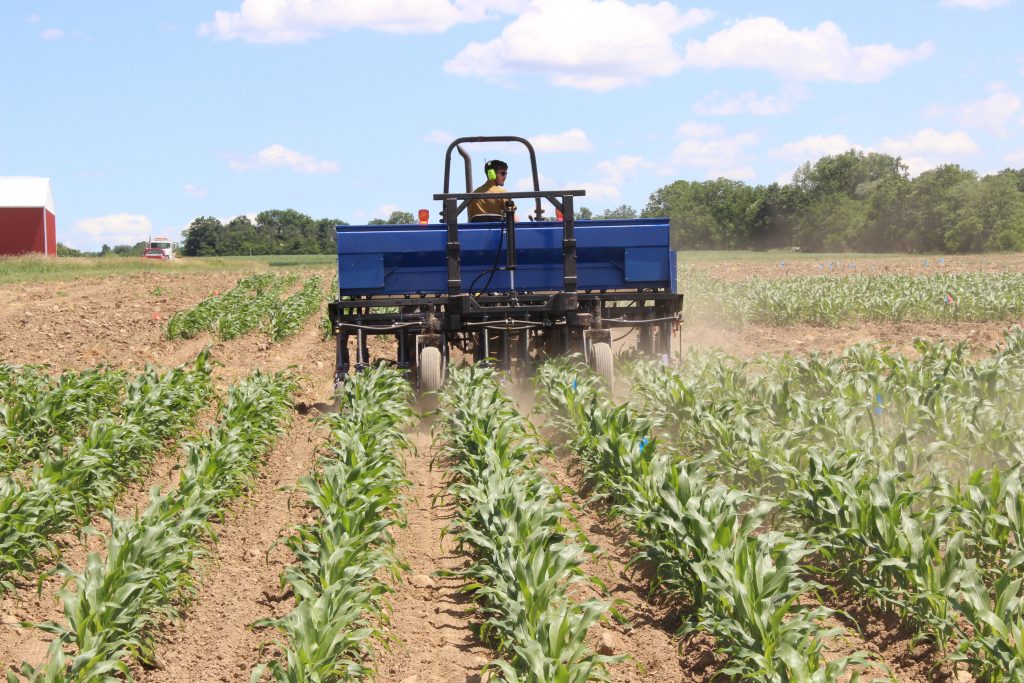Cover Crop Drill Interseeding

Many farmers interested in cover cropping struggle with lack of time after corn or soybean harvest to plant cover crops sufficiently early. Plentiful biomass production is frequently the goal of cover cropping, and the earlier cover crops can be planted the more biomass they can produce.
Using a drill InterSeeder developed by Penn State to interseed cover crops between the rows of growing cash crops is a novel method to increase the amount of time cover crops can grow before winter. The InterSeeder offers enhanced cover crop establishment, the ability to interseed into no-till planted cash crops, and decreased labor and fuel requirements.
Study: Effects of Corn Population on Interseeded Cover Crop Performance
Study: Effects of Interseeded Cover Crop Species on Establishment, Weed Control and Corn Yield
Cover Crop Adoption
Why don’t farmers adopt more ecological practices?
Produce growers are increasingly expected to not only provide safe, healthy, and affordable food to consumers, but to do so in ways that reduce or reverse the deleterious effects of intensive, industrial agricultural practices on the environment. Many on-farm practices that have a positive impact on the environment, such as cover cropping, diverse crop rotations, and non-crop vegetation management, have also been shown to benefit farm productivity. However, relatively few farmers have adopted or consistently used these management practices in the United States despite the financial support available for some of these practices through incentive programs. Consequently, there is a need to rethink the ways in which we are attempting to increase the adoption of agroecological practices.
Cover Crop Breeding
Why breed legume cover crops?
Although they offer many benefits, legume cover crops can be variable in performance. Management constraints and poorly performing germplasm are contributing factors. Unlike cash crops, cover crops have not been bred to optimize the traits that farmers need, particularly for specific regions of the United States. This deficiency means that modest investments in germplasm improvement could yield large benefits.






